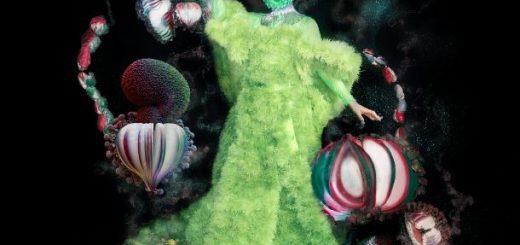I’ve Seen It All by Björk Lyrics Meaning – Unraveling the Layers of Existential Reflection
Lyrics
I have seen the trees
I have seen the willow leaves
Dancing in the breeze
I’ve seen a man killed
By his best friend,
And lives that were over
Before they were spent.
I’ve seen what I was
And I know what I’ll be
I’ve seen it all
There is no more to see
You haven’t seen elephants
Kings or Peru
I’m happy to say
I had better to do
What about China?
Have you seen the Great Wall?
All walls are great
If the roof doesn’t fall
And the man you will marry
The home you will share
To be honest
I really don’t care
[gibberish]
You’ve never been
To Niagara Falls
I have seen water
It’s water, that’s all
The Eiffel Tower
The Empire State
My pulse was as high
On my very first date
And your grandson’s hand
As he plays with your hair
To be honest
I really don’t care
[gibberish]
I’ve seen it all
I’ve seen the dark
I’ve seen the brightness
In one little spark
I’ve seen what I chose
And I’ve seen what I need
And that is enough
To want more would be greed
I’ve seen what I was
And I know what I’ll be
I’ve seen it all
There is no more to see
You’ve seen it all
And all you have seen
You can always review on
Your own little screen
The light and the dark
The big and the small
Just keep in mind
You need no more at all
You’ve seen what you were
And know what you’ll be
You’ve seen it all
There is no more to see
[gibberish]
Björk’s ‘I’ve Seen It All’ is not just a song; it’s a journey through the tranquil fields of human experience luxuriously infused with ethereal melodies and profound introspection. The track, emanating from Björk’s 2000 album ‘Selmasongs’, was created for the soundtrack of Lars von Trier’s film ‘Dancer in the Dark’, where she also played the leading role. This piece is an exploration of the song’s profound commentary on acceptance, existential fulfillment, and the contemplation of life’s grand tapestry.
But beyond its surface—beyond the impeccable blend of cinematic orchestra and the tremor in Björk’s voice—lies an intricate web of philosophical musings. This article peels back the layers of this sonic masterpiece to reveal the existential ethos within its heart. Strap in as we dissect the haunting beauty and sentient depths of ‘I’ve Seen It All’.
The Stoic Mantra – Embracing Life’s Theatre
Björk’s haunting refrain, ‘I’ve seen it all, there is no more to see,’ serves as a stoic chant that resonates with the wisdom of having witnessed the entirety of life’s play from the front row. It’s a declaration which could be interpreted as both resignation and contentment—a duality present in much of Björk’s work.
The willow leaves dancing in the breeze, the tragic death of a man by his best friend; these are all vignettes from the spectrum of life’s richness and its inherent tragedy. The song’s protagonist displays a composed detachment, one that only emerges through the lived experience and accepts the beautiful and brutal in equal measures.
Globetrotting versus Internal Explorations
The juxtaposition of grandiose landmarks with personal milestones underlines a critical discourse between external exploration and internal discovery. When Björk sings of elephants, kings, and Peru, she is acknowledging the classic symbols of worldly adventures while subtly asserting the weight of intimate moments and introspections to be even greater.
What the song suggests is a prioritization of the internal journey over external conquests. The ‘walls’ and ‘falls’ of the world—no matter how great—are rendered moot against the backdrop of personal revelations and the emotional landmarks one traverses throughout life.
The Lyrical Labyrinth – Finding the Hidden Meaning
At the heart of ‘I’ve Seen It All’ is a profound hidden meaning that grapples with the concept of satiety. Through the lens of a narrator who’s experienced the breadth of existence, Björk invites the listener to ponder whether the ceaseless pursuit of new experiences is a quest for fulfillment or a flight from oneself.
The song does more than cast a shadow of doubt on hedonic endeavors; it encourages a deliberate embrace of simplicity and the raw essence of being alive. It nudishes the listener to reflect on what it means to truly ‘see’—to appreciate the nuances of existence without being caught in the relentless pursuit of the next spectacle.
Echoes of the Heart – Memorable Lines that Captivate
‘All walls are great if the roof doesn’t fall,’ sings Björk, distilling a moment of profundity into a single, memorable line that reverberates with simplicity and depth. This line is a poet’s masterstroke, encapsulating the essence of subjective experience over objective magnificence.
Each individual’s elevation of pulse, the hand of a loved one, holds more significance than any monumental achievement or architectural wonder. It’s in these personal echoes where we find the true measure of our lives’ worth and a reminder that sometimes, the grandest of things can pale in comparison to the subtleties of the human experience.
From Sight to Insight – The Journey of Contentment
As the song concludes with the mantra, ‘You’ve seen what you were and know what you’ll be,’ there seems to be a transcendental shift from the act of seeing to that of knowing. Björk encapsulates the essence of contentment—a state of being where one’s past, present, and future coalesce into a serene knowingness that requires no further embellishment.
‘I’ve Seen It All’ serves as a sophisticated meditation on acceptance and the beauty of limits. It reframes the narrative of human longing and expands it into a holistic view of satisfaction, encouraging listeners to transcend the superficial allure of novelty and recognize the profundity in the ‘enoughness’ of their own stories.








